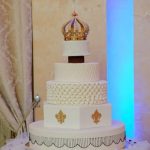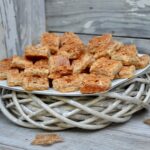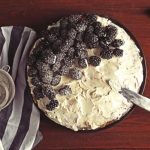Fondant decorations have become increasingly popular in the world of cake decorating. With their smooth, polished appearance and endless design possibilities, fondant adds a touch of elegance and creativity to any cake. But how do you stick these delicate decorations to your cake without them falling off? In this article, we will explore the ins and outs of sticking fondant decorations to a cake, providing you with essential tips and techniques to ensure your creations stay securely in place.
When it comes to cake decorating, fondant has quickly become a “must-have” for both professionals and home bakers. Unlike buttercream or ganache, which can be more challenging to achieve a flawless finish with, fondant provides a smooth canvas that allows for intricate designs and details. Whether you’re looking to create stunning wedding cakes or whimsical birthday treats, fondant gives you the freedom to let your creativity shine.
However, sticking fondant decorations onto cakes can be tricky if not done correctly. It’s crucial to understand the basics of fondant and how it behaves on different surfaces.
From choosing the right type of fondant for your project to properly preparing your cake for the addition of decorative elements – we will guide you through each step so that you can achieve professional-looking results every time. So let’s dive into the world of fondant decorations and discover how you can effortlessly adhere them to your cakes.
Understanding the Basics
Fondant is a popular icing that is used to create smooth and flawless finishes on cakes. It is a pliable sugar paste that can be rolled out and draped over cakes to achieve a clean and polished look. In this section, we will explore the basics of fondant, including its ingredients, types, and how it differs from other cake decorating techniques.
Fondant is made primarily of sugar, water, and gelatin or marshmallows. It has a dough-like texture and can be rolled out similar to cookie dough. There are two main types of fondant: commercially made fondant and homemade marshmallow fondant (MMF).
Commercial fondants are available in many colors and flavors and can be purchased ready-made or as mixtures that require additional ingredients like water or shortening. MMF, on the other hand, is made by melting marshmallows and mixing them with powdered sugar until it becomes pliable.
One key advantage of using fondant for cake decorations is its versatility. Fondant can be colored with food coloring to any shade desired, making it an excellent choice for creating custom designs. Fondant also allows for intricate details such as flowers, bows, or figurines that may not be possible using traditional icing methods. Its smooth finish lends itself well to sculpting and carving detailed designs without the risk of crumbs getting stuck in the icing.
To summarize, fondant is a flexible sugar paste used in cake decorating to achieve smooth finishes on cakes. It comes in two main types: commercially made fondant and homemade marshmallow fondant (MMF). Fondant offers endless possibilities for creating custom designs due to its versatility in coloring and ability to hold intricate details. The next section will explore different types of fondant decorations that can be used on cakes.
Choosing the Right Fondant Decorations for Your Cake
When it comes to decorating cakes with fondant, one of the most crucial steps is choosing the right fondant decorations. The design and style of the decorations can greatly impact the overall look and feel of your cake. With so many options available, it can be overwhelming to make a decision. This section will guide you through exploring various designs and styles to help you choose the perfect fondant decorations for your cake.
- Themed Decorations: If you’re planning a themed cake, consider using fondant decorations that match the theme. For example, if you’re making a princess-themed cake, you could use fondant tiaras, castles, or sparkly edible pearls as decorations. If it’s a sports-themed cake, consider adding fondant soccer balls, basketballs, or baseball bats as embellishments.
- Nature-Inspired Decorations: Fondant provides endless possibilities when it comes to creating decorations inspired by nature. You can use fondant to make flowers, leaves, butterflies, or even animals like cute fondant bees or ladybugs.
- Personalized Decorations: Add a personal touch to your cake by incorporating custom-made fondant decorations. These could include initials or names made from fondant letters or creating figurines that resemble the person’s hobbies or interests.
When selecting your fondant decorations, try to keep in mind the overall theme and color scheme of your cake. Make sure they complement each other and create a cohesive look. Also consider the size and proportion of the decorations in relation to your cake – smaller cakes may require smaller decorations that won’t overpower the design.
With these ideas in mind, let your creativity flow and explore different designs and styles for your fondant decorations – they will truly make your cake stand out.
Preparing Your Cake for Fondant Additions
Before you can start applying fondant decorations to your cake, it is important to properly prepare your cake to ensure a smooth and flawless finish. This involves leveling the cake layers, crumb coating the cake, and establishing a sturdy base.
Leveling your cake layers is an essential step in creating a professional-looking cake. Uneven or domed layers can make it challenging to apply fondant smoothly. To level your cake layers, you can use a long, serrated knife or a cake leveler. Carefully remove any raised areas by slicing off the excess until the top of each layer is flat and even.
Once your cake layers are leveled, it is time to crumb coat the cake. A crumb coat is a thin layer of frosting that helps seal in any loose crumbs and provides a smooth surface for fondant application. To crumb coat your cake, start by applying a thin layer of frosting all over the chilled cake using an offset spatula.
Make sure to cover the top and sides evenly. Don’t worry about making it perfect at this stage; the purpose is just to create an initial layer of frosting.
After applying the crumb coat, chill the cake in the refrigerator for about 15-20 minutes to allow the frosting to firm up. This will make it easier to add additional layers of frosting without disturbing the crumbs.
One important aspect often overlooked when preparing a cake for fondant additions is having a sturdy base. The weight of the fondant decorations can put strain on weaker bases, causing them to collapse or become unstable. To avoid this issue, make sure you have a strong base that can support the weight of your decorated cake.
By taking these steps in preparing your cake for fondant additions – leveling the layers, crumb coating, and ensuring stability with a sturdy base – you will set yourself up for success when it comes to applying fondant decorations. These steps create a smooth canvas for your fondant to adhere to, resulting in a professional and polished final product.
| Preparation Steps | Description |
|---|---|
| Leveling the cake layers | Slice off any raised areas until the top of each layer is flat and even. |
| Crumb coating the cake | Apply a thin layer of frosting all over the chilled cake to seal in crumbs and provide a smooth surface. |
| Ensuring a sturdy base | Use a strong base that can support the weight of your decorated cake. |
Step-by-Step Guide
Applying fondant decorations to a cake may seem like a daunting task, but with the right techniques and careful steps, it can be a breeze. This step-by-step guide will walk you through the process of sticking fondant decorations to your cake, ensuring a beautiful and professional result every time.
Step 1: Prepare Your Decorations
Before applying fondant decorations to your cake, make sure they are prepared and ready to be placed. If you are using pre-made fondant cut-outs or shapes, ensure that they have hardened slightly by leaving them out overnight or placing them in the refrigerator for a few minutes. This will make handling and placing them on the cake easier.
Step 2: Make Your Surface Sticky
To ensure that your fondant decorations adhere well to the cake, you need to create a sticky surface. Using a small paintbrush or clean pastry brush, lightly coat the back of each decoration with water or edible glue. Be careful not to apply too much moisture as it can dissolve or distort your decorations.
Step 3: Position and Press
Carefully place each fondant decoration onto the desired spot on your cake. Gently press down on each decoration to secure it in place. Start with larger decorations first, followed by smaller ones. You can use the flat side of an offset spatula or your fingertips to apply gentle pressure.
Step 4: Finishing Touches
After all your fondant decorations have been applied, take a moment to inspect and adjust any misplaced pieces. Use clean hands or tools to nudge them into their proper positions if needed. Once you are satisfied with the placement, allow the decorations to dry for at least an hour before adding any additional details or finishing touches.
Remember that practice makes perfect when it comes to sticking fondant decorations onto cakes. If you are new to cake decorating, start with simple designs and gradually work your way up to more intricate ones. With time and patience, you’ll develop the skills and confidence needed to create stunning fondant creations on your cakes.
Essential Tools and Techniques
Choosing the Right Tools: What You’ll Need
When it comes to successfully sticking fondant decorations to a cake, having the right tools is essential. Here are some of the must-have tools for this task:
- Fondant smoother: This tool helps in smoothing out any wrinkles or air bubbles that may occur when applying fondant decorations to a cake.
- Piping gel: Piping gel acts as an edible adhesive and can be used to stick fondant pieces together or attach them to the cake.
- Edible glue: Similar to piping gel, edible glue is specifically designed for attaching fondant decorations to a cake. It is available in stores or can be easily made at home using a mixture of water and confectioners’ sugar.
- Rolling pin: A rolling pin is necessary for rolling out the fondant smoothly and evenly before applying it to the cake.
Applying Fondant Decorations with Success
Once you have gathered all the necessary tools, it’s time to start sticking your fondant decorations onto the cake. Follow these tips and tricks for successful application:
- Clean and dry surface: Before applying any fondant decoration, make sure that the surface of your cake is clean and dry. Any moisture or residue can interfere with proper adhesion.
- Use an adhesive: Apply either piping gel or edible glue lightly on the backside of each fondant piece that needs to be attached to the cake. Using too much adhesive can cause the decoration to slide off, while using too little may result in poor adhesion.
- Press gently but firmly: Once you have placed a fondant decoration on your cake, gently press down on it using your fingers or a fondant smoother. This will help ensure that it adheres properly without damaging its shape.
- Allow drying time: After attaching each individual fondant decoration, give it some time to dry and set in place before adding more decorations. This will prevent any accidental movement or unintended shifting.
- Add support if needed: If you are attaching larger fondant decorations that may be heavier or have a three-dimensional shape, consider using toothpicks or dowels as support. Insert these supports into the cake before applying the fondant decoration to provide additional stability.
Finishing Touches: Bringing Your Fondant Decorations to Life
Once all your fondant decorations are successfully stuck to the cake, it’s time to bring them to life with some finishing touches. Here are some ideas for enhancing your fondant creations:
- Edible glitters and dusts: Sprinkle some edible glitter or dust over your fondant decorations to add a touch of sparkle and shine. These are available in various colors and finishes.
- Pearls and dragees: Attach edible pearls or dragees to your fondant decorations using a small amount of piping gel or edible glue. These can create a beautiful textured effect and add elegance to your cake design.
- Painted details: Use food-safe brushes and edible paints to add intricate designs, patterns, or lettering onto your fondant decorations. This adds a personalized touch and allows you to showcase your creativity.
Remember, practice makes perfect when it comes to sticking fondant decorations onto cakes. Don’t be afraid to experiment with different techniques and tools until you find what works best for you. With time and patience, you’ll be able to create stunning and professional-looking cakes adorned with beautiful fondant creations.
Common Mistakes to Avoid
When it comes to sticking fondant decorations to a cake, there are some common mistakes that can occur. These mistakes can lead to uneven or unstable decorations, which can detract from the overall look of the cake. However, with a few troubleshooting tips, you can ensure a seamless application of your fondant decorations.
- Smoothing out air bubbles: One common mistake is getting air bubbles trapped underneath the fondant decorations. To avoid this, make sure to roll out your fondant evenly and smoothly before applying it to the cake. Use a rolling pin to gently smooth out any air bubbles that may appear during the application process.
- Properly adhering fondant: Getting your fondant decorations to stick securely to the cake is crucial for a seamless application. A common mistake is not using enough adhesive or using an inadequate one. There are several options when it comes to adhering fondant, including water, edible glue, or even melted chocolate or royal icing. Choose an adhesive that works best for your specific project and apply it sparingly but evenly on the back of each decoration.
- 3.Importance of proper drying time: Rushing the drying process is another common mistake when working with fondant decorations. It’s important to allow ample time for your fondant decorations to dry and set before attaching them to the cake.
This will help prevent sagging or sliding off of the decorations once they are applied. Patience is key in this step, so be sure to plan ahead and give yourself enough time for drying before assembling your cake.
By avoiding these common mistakes and following these troubleshooting tips, you can ensure a seamless application of your fondant decorations on your cakes.
Adding the Finishing Touches
Enhancing your fondant decorations with edible glitters, pearls, and other embellishments is the perfect way to take your cake design to the next level. These finishing touches can add a touch of sparkle, elegance, or whimsy depending on the style you’re going for. Let’s explore some popular options for enhancing your fondant decorations.
One popular choice for adding a touch of sparkle to your fondant decorations is edible glitter. Edible glitters are available in various colors and sizes, allowing you to customize the look of your decorations. You can sprinkle it over the entire surface of your fondant decorations for a subtle shimmer, or use it strategically to highlight specific details.
To apply edible glitter, simply brush a thin layer of clear piping gel onto the area you want to sparkle and then sprinkle the glitter over it. Shake off any excess glitter and let it dry completely before handling.
Another option for enhancing your fondant decorations is using edible pearls or dragees. These small round beads come in different sizes and colors, providing an elegant touch to any design. You can use them as accents on flowers, borders, or even create beautiful patterns with them. To attach edible pearls or dragees to fondant, simply dab a small amount of water or clear piping gel onto the back of each pearl and press gently onto your decoration.
If you’re looking for something more whimsical or fun, consider using edible paints or food coloring gels to add color and detail to your fondant decorations. You can paint intricate designs directly onto your decorations using thin brushes or create vibrant shades by mixing different food coloring gels together. This allows you to truly customize your design and make it pop.
By adding these finishing touches with edible glitters, pearls, and paints, you can elevate the overall aesthetic of your cake design and make it truly unique. Don’t be afraid to experiment with different techniques and combinations until you achieve the desired effect. Remember to let your creativity shine and have fun with the process.
Extending the Lifespan of Your Fondant Decorations
Fondant decorations can be a labor of love, taking hours to create and perfect. After all that hard work, it’s important to ensure that your fondant decorations last as long as possible. With the right storage and care techniques, you can extend the lifespan of your fondant creations and keep them looking beautiful for days, or even weeks, after they are applied to your cake.
Proper storage is key when it comes to preserving fondant decorations. The first step is to make sure the decorations are completely dry before storing them. This can take anywhere from 24 hours to several days, depending on the size and complexity of the design.
Once dry, store the decorations in an airtight container in a cool, dry place away from direct sunlight. Moisture is the enemy of fondant, as it can cause colors to bleed and shapes to warp or sag.
If you have larger fondant pieces or three-dimensional designs that are too delicate to store flat, consider using a cake box with clear sides or a plastic storage container with adjustable dividers. These containers will protect your creations from dust and humidity while allowing you to easily see and access them when needed.
In addition to proper storage, taking care of your fondant decorations is essential for maintaining their appearance. Avoid touching them with wet hands or placing them on wet surfaces, as this can cause them to become sticky or dissolve. If a decoration does become damaged or starts to lose its shape over time, you may be able to repair it by gently reshaping it with clean hands or using a small brush dipped in water as adhesive.
By following these storage and care tips, you can ensure that your fondant decorations remain in pristine condition until it’s time for your masterpiece to be enjoyed. Taking the extra time and effort to properly preserve your creations will allow you to showcase your talent and creativity for longer periods of time.
Conclusion
In conclusion, the art of sticking fondant decorations to a cake opens up a world of creative possibilities. By understanding the basics of fondant and choosing the right decorations for your cake, you can create stunning designs and styles that will impress your guests.
To ensure success, it is important to properly prepare your cake by leveling, crumb coating, and creating a sturdy base. Following a step-by-step guide will help you apply the fondant decorations accurately and securely. Utilizing essential tools and techniques such as rolling out the fondant evenly and using edible glue will enhance the stickiness and longevity of your decorations.
It is crucial to avoid common mistakes such as not smoothing out air bubbles or applying decorations before the frosting has set. Troubleshooting tips provided in this article will help you achieve a seamless application.
To add that extra touch of elegance, consider enhancing your fondant decorations with edible glitters, pearls, or other embellishments. These finishing touches can truly make your creations stand out.
Lastly, extending the lifespan of your fondant decorations through proper storage and care is essential for preserving their beauty. By following the storage tips provided in this article, you can enjoy your stunning fondant creations for longer periods of time.
With this knowledge and guidance, it is now time to let your creativity shine by experimenting with stunning fondant creations on cakes. Whether it’s for a special occasion or just to showcase your artistic skills, working with fondant will allow you to create beautiful designs that are sure to impress anyone who sees them. So go ahead and have fun incorporating fondant into your cake decorating endeavors.

Welcome to my blog about home and family. This blog is a place where I will share my thoughts, ideas, and experiences related to these important topics. I am a stay-at-home mom with two young children. I hope you enjoy reading it! and may find some helpful tips and ideas that will make your home and family life even better!





